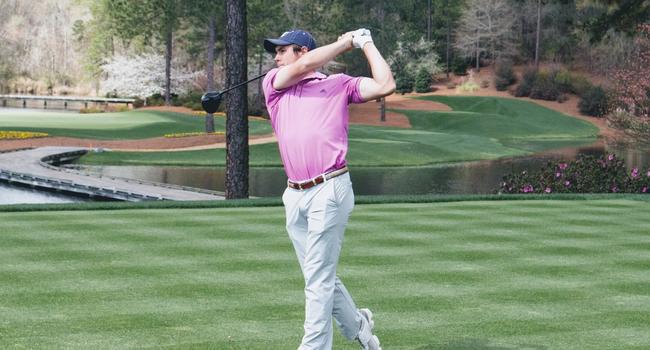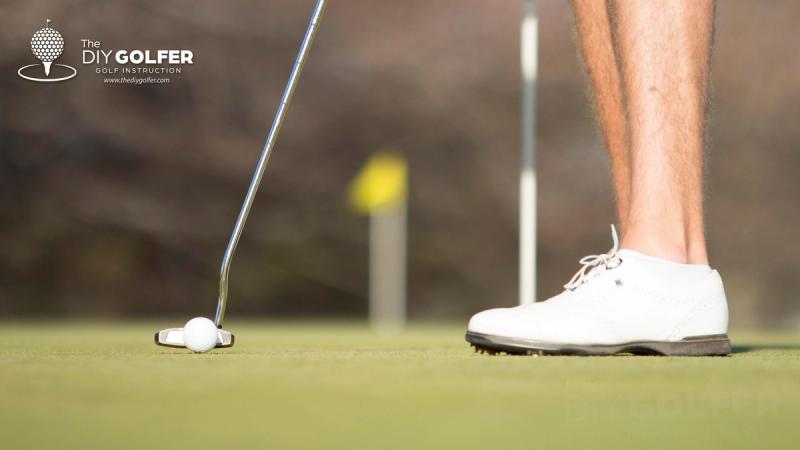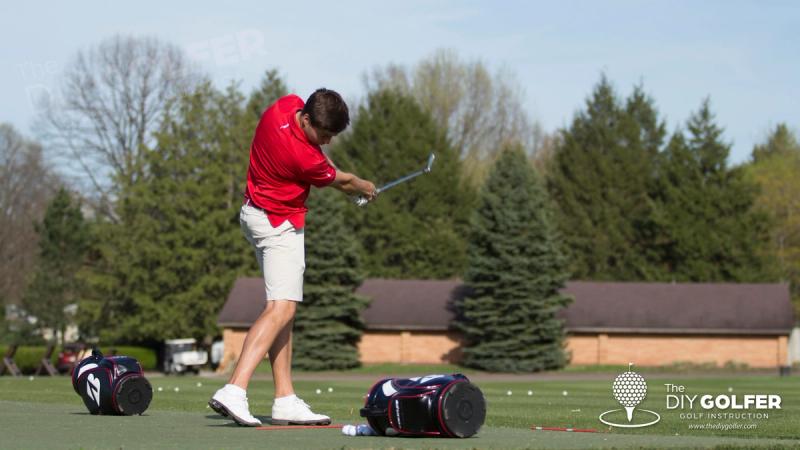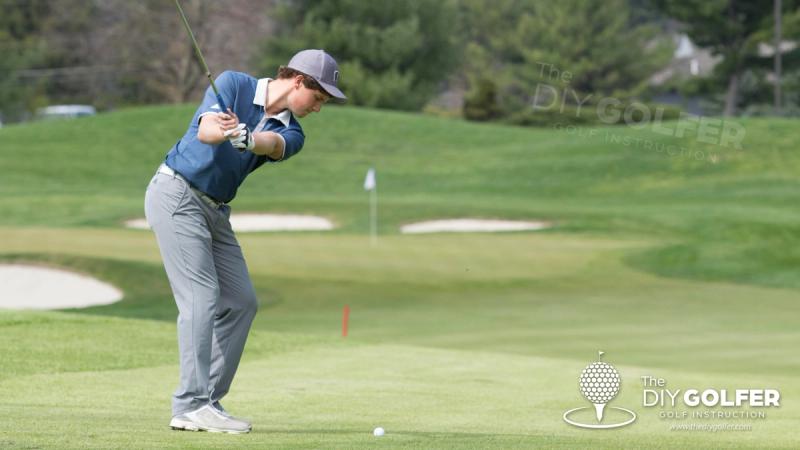Last Updated: Nov 03, 2023
Golfing in Cold Weather: My Top 6 Strategies
Learn how to beat the cold weather and shoot low scores during winter with these 6 strategies.
Table of Contents

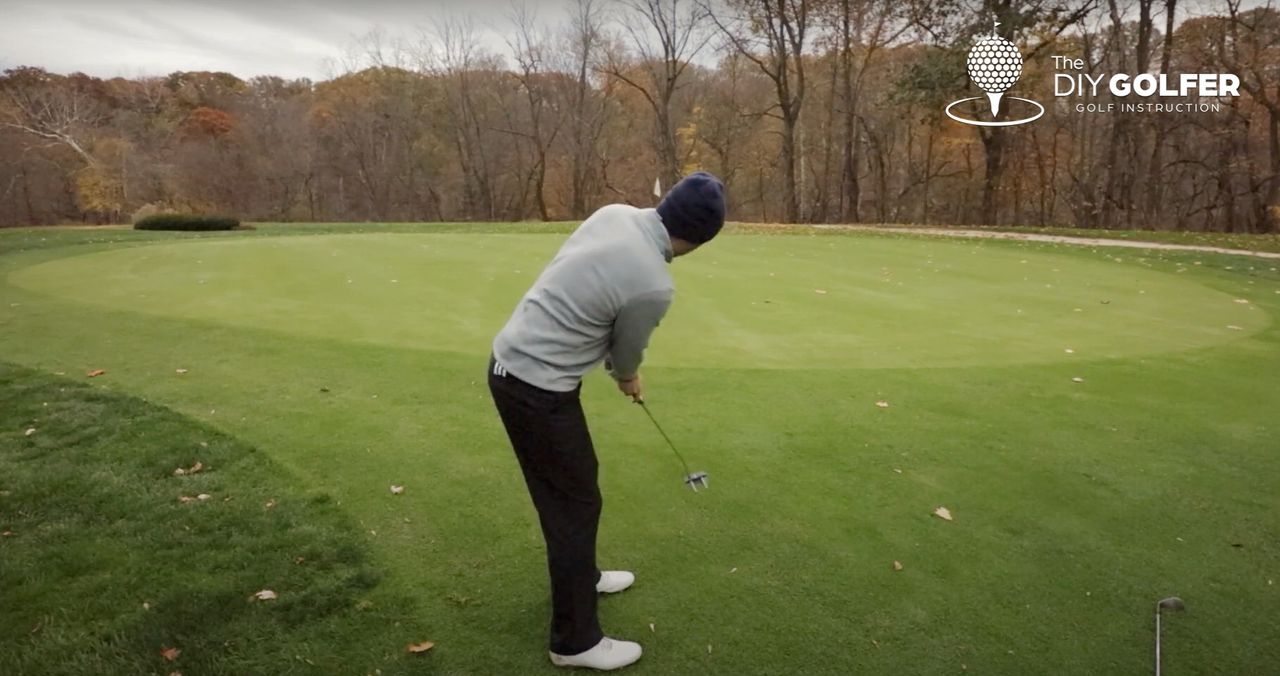
If you live in the North, and you are a golfer, you know the pain of waiting to get outside again. Not all of us are fortunate enough to live in a location where golf happens year-round.
Although indoor simulators and practice areas have become more common and accessible to the average golfer, nothing beats the sight of real grass!
In this post, I will cover 6 things that you might want to consider when playing in the cold. Whether you're forced to play in the cold for a tournament, or you're just a golf nut, I hope this post is helpful to your winter golfing success.
How Cold is Too Cold for Golf?
If you ask some golfers, playing in anything colder than 50 degrees is too cold for golf. If you ask others like myself, if the course is open, it's not too cold to golf!
Generally, golf courses will close if there is snow on the ground or freezing temperatures. This is because walking on frosted golf greens can cause permanent damage to them.
But if the temperature is above freezing and the course is open, you better get the mittens out because it's time for some golf!
In this post, I will be covering:
- How to dress in the cold (in more detail than you'll find anywhere else)
- What happens to your golf ball in the cold, and how to calibrate your yardages accordingly
- The problem with leaving your clubs in the trunk during winter
- What happens to YOU in the cold, and how that affects your yardages
- The shots that you need to avoid during a cold golf round
- What your expectations should be during a frigid golf round (you certainly don't want to be cold AND mad)
How to dress for golf in the cold
It may sound rather simplistic and intuitive trying to figure out what to wear in the cold to play golf.
Yes I already know... layers layers layers…
It's what we hear over and over again, but what layers???!!!
When I play golf in the cold (usually 40 degrees and below), there are several pieces of clothing that are essential to playing good golf:
- Long underwear/leggings- This is an absolute must in cold weather. If you don't already own a pair, I'll just say it.. You're doomed.
- Thick socks- Although golf shoes are generally insulated pretty well, having thick socks is important on the course. Cold feet is never fun on the course because walking actually starts to hurt by the 12th hole or so!
- Long (and preferably thick) golf pants- Many golf pants are made for comfort, but on the same token, they are not meant for warmth. If anything, they are built to cool you off! What would PGA Tour pros do on 95 degree days with extra thick golf pants on? I would suggest finding some thicker golf pants to wear.
- Under Armour (or knockoff brand)- Having a skin tight layer on the upper body is important, but you have to be careful. Make sure that your Under Armour isn't too tight. Remember, you're already going to be restricted in movement thanks to the cold weather.
- Pullover- it could be some sort of quarter-zip (I prefer Adidas), or a golf sweater. If you're playing in the wind AND the cold, I've found that cotton sweaters are the best bet. They just seem to keep the heat in a bit better than a quarter-zip.
- Mittens and Hand-warmers- I actually stay away from the "winter golf gloves" sold at golf stores. I don't know if it's just me, but they don't feel all that great. Instead, I wear my normal glove, and constantly keep some mittens (with handwarmers) on. Trust me, you won't look stupid wearing big mittens walking down the fairway! David Toms has the right idea!
- A beanie- It seems obvious, but I've seen way too many winter golfers wearing their normal golf hat in 35 degrees to leave it out.
- A rain suit (optional, but extremely helpful)- If the temperature is really low (sub 40), you'll need some extra layers. Instead of trying to squeeze into another pullover, I use a rain jacket. They are meant to be worn over other clothing, so they are baggy enough to allow for mobility. Most of the time, I'll take the jacket off to hit my shots (personal preference), but while walking down the fairway, having this extra layer really does help. Also, I'll wear rain pants over my leggings and golf pants the entire round. I promise having these three layers will keep your legs nice and toasty :)
What happens to your golf ball in cold weather?
When playing in the cold, there are two primary factors at play:
- The temperature of the golf ball
- The thickness of the air
As the temperature drops, your golf ball actually gets smaller, and the air gets denser.
I'm going to save myself from criticism, and not try to explain this concept in technical terminology that I don't truly understand.
Just know that colder temperatures equal more air resistance, and less "pop" off the face.
What do we do about it?
Well, for starters, I would recommend using the ball flight effects calculator, because it gets pretty close in estimating how these two factors will affect your golf ball.
Also, you may consider switching to a lower compression golf ball like Phil Mickelson does:
I've changed to softer, lower compression balls when it is cold, said Mickelson at the Waste Management event in 2011. A softer ball compresses more easily in the cold. (source)
Personally, I don't get too worried about changing my golf ball for different conditions, and wouldn't assume that most amateurs would significantly benefit from it. Despite this, it's always something to keep in mind.
Don't leave your clubs in the trunk!
Don't overthink this one.
Just make sure to bring the clubs indoors between rounds. This will keep your golf balls warm, and your grips warm, both of which will significantly affect your golf round.
You'll experience much less pain during your winter golf round :)
What happens to your body and the golf course in the cold
Beyond the ball flight effects calculator that you hopefully downloaded above, there are a few other factors that may not have been accounted for.
I think this is where most golfers get tripped up when playing in the cold. They know that they need to account for the cold, but don't realize just how much they need to account for it!
Sure, a 200 yard shot in 40 degrees is supposed to play 210.
I hit my 5-iron about 210 yards, so based on this information, I would be hitting 5-iron into this green.
The problem is, most of the time, I would not be able to get my 5-iron to this 210 yard hole.
Why?
Well, on top of the effects that the cold has on the ball, it also significantly affects my body. In 40 degrees, I'm not going to have the same flexibility that I have in 80 degrees.
I might start off okay, but by the fifth hole, I'll most likely be pulling 3 or 4-iron from 210.
When you're playing in the cold, be aware of how cold you are at any given moment. Chances are, you'll hit the ball a bit further in the beginning holes than the ending holes. Regardless of how many layers of clothing you wear, you will always have to face this reality. Your best option is to accept it, and play for it.
So you've calculated (from the ball flight effects calculator) that a 200 yard shot in 40 degrees plays 210. You're also on the 9th hole, so you add another 10 yards to account for your lack of mobility.
You pull your 220 club and hit the shot.
It goes long.
Why did this happen?
Well, winter golf isn't just about you and the ball. You must consider how the course is playing.
Chances are, the course is somewhat frozen, which will cause the ball to bounce more, and spin less off that first hop.
If you're playing a completely frozen golf course, you may end up hitting your 200 yard club from 200 yards just because of how hard the ground is!
As you can see, trying to get your distances right in the cold is no easy task. There is a lot of guesswork, but if you are aware of the main factors at play, you'll be much better off in getting the yardages correct.
Avoid these types of golf shots in the cold
When playing golf in 35 degrees, there is a harsh reality (aside from the fact that it is 35 degrees!) that you must face:
You're going to be limited in the number of shots you can successfully pull off.
The good news is, you really don't need an extremely diverse repertoire of shots to play good golf. You just need a bit of strategy and discipline.
When outside in cold temperatures, we ALL understand that our small muscles are the first to go. Your fingers, your wrists, and even forearms in some cases will be too cold to hit some of the "specialty" shots that you normally hit.
I don't care who you are, and how manly you think you are. The flop shot off a tight lie isn't the best idea in 35 degrees.
That's just one example though. There are several shots that will become much more difficult to hit well, and all of them require you to use the small muscles.
Instead of trying to give some long explanation, I'm going to provide you with a list of shots that you should avoid or at least limit the use of when playing in the cold.
- Flop shots- unless you're in fluffy rough (unlikely in the middle of winter), these shots are tough to pull off. Unless it is 100% necessary, pick a shot that doesn't require you to take a big swing.
- Bunker shots- yes yes yes, I know that you can't just avoid bunker shots. I added this to the list so that you are more strategic when hitting approach shots. If the pin is right next to a bunker, I'd suggest playing away from the pin. You're much better off with a 40 foot putt than a touchy little bunker shot.
- Power swings- you know those moments where you are in between clubs, and you decide to just hit the smaller one really hard? In the cold, this usually doesn't work thanks to your tight muscles.
I'm not saying that you'll shoot a bad round of golf if you try and pull one of these shots off.
I'm just suggesting that you be aware of the course management strategies you are using. Playing well in the cold doesn't necessarily require you to fire at flags all day. Everyone is playing under the same conditions, so in the end, the player navigates this unfamiliar environment the best wins.
Set your Expectations
By now, it may be obvious to you that the scores will (on average) be higher in cold weather than in warm weather.
As a result, your expectations must adjust accordingly.
If you expect to go out in 35 degrees and shoot the same score you do when it is 80 degrees, it is going to be a frustrating round of golf.
Playing in the cold is a grind. It isn't meant to be easy. Pars are good. Birdies are a bonus.
When managing your decisions on the course, you must realize that the strategies you normally use will have to be adjusted according to the situation.
It may not be a good decision to go for that par 5 that you ALWAYS take a crack at.
It also may not be a good decision to charge your putts at the hole like you normally are accustomed to.
Playing well in the cold really comes to adaptability. You will be in different spots on the course than you normally are, and you will have to play different shots than you normally do. Just accept this fact, and you will be a lot more likely to succeed!
Concluding Thoughts
My intention with this post was to give you a unique viewpoint of playing golf in the cold. I'm sure that you've heard several of the strategies above previously, but I hope by reading this you've added a few new strategies to your winter golf game!
